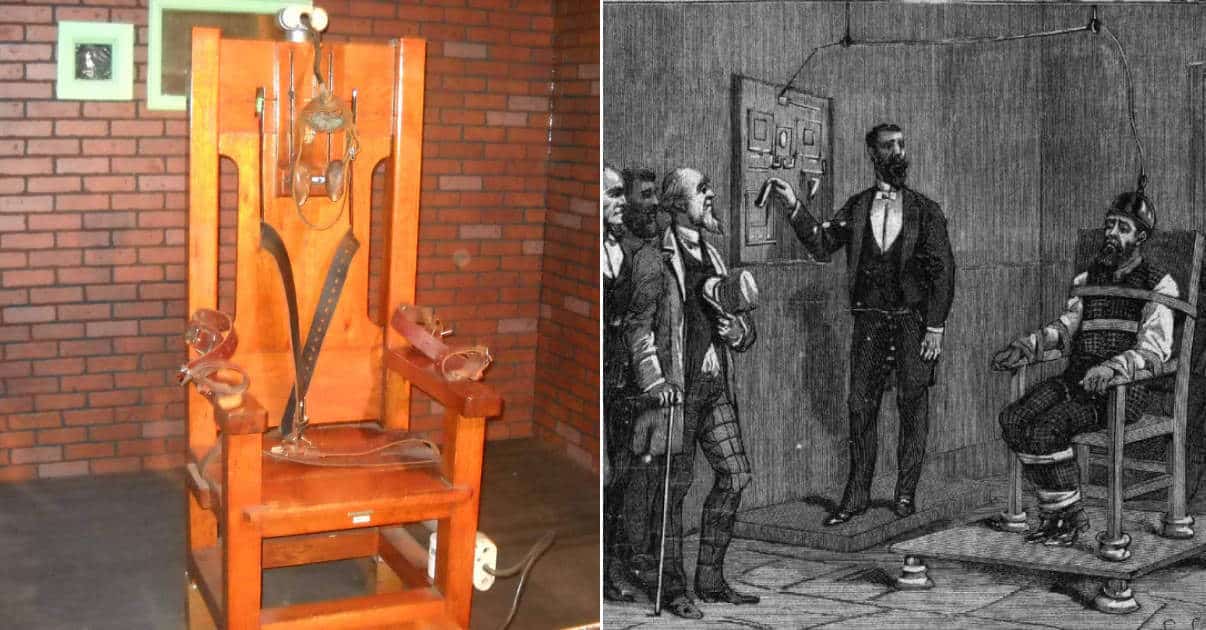At the time of writing, 31 American states have the death penalty, and the United States is the only ‘Western’ nation to still utilize capital punishment. There was a brief lapse in executions in the country between 1967 and 1977 when no death sentences were carried out. However, the U.S. Supreme Court reaffirmed capital punishment’s legality in the Gregg vs. Georgia case of 1976, and since then, approximately 7,800 people have received the death sentence; over 1,400 of these prisoners have died.
The most commonly used execution methods are lethal injection and electrocution. However, a handful of states use alternative methods. Ronnie Lee Gardner was shot by firing squad in Utah in 2010, William Bailey was hanged in Delaware in 1996, and Walter LaGrand died via lethal gas in Arizona in 1999.
The electric chair is the most storied form of the death penalty, and there have been numerous horrific tales about this execution method over the years. William Kemmler was the first man to die via the electric chair, in 1890, and ‘famous’ deaths include Ted Bundy, Leon Czolgosz, and Sacco & Vanzetti. While there aren’t many electric chair executions these days, it is still occasionally used with the potential to be a gruesome spectacle. Here are ten facts about the famous electric chair.

1 – Some People Burst into Flames
Statistics from March 2016 outlined the fact that only nine of the last 744 people executed in the United States died in the electric chair. Controversy over lethal injection drugs means there are called for electrocution to be used more often. However, proponents of the chair must recall the various horrors associated with this form of execution. Bear in mind that electrocution was initially introduced in the 1880s as a means of killing cattle, stray animals, and lame horses.
Thomas Edison was a staunch advocate of electrocution and believed it was superior to hanging. However, it is a relatively inefficient method at best and downright cruel at worst. Obviously, many people will state that the likes of Albert Fish and Ted Bundy deserve all the pain they receive. When electrocution goes wrong, the results are absolutely horrific.
In 1982, Frank J. Coppola sat on the chair in Virginia, but things didn’t go according to plan. He was fried for approximately 55 seconds, and during that period, witnesses heard the unmistakable sounds of sizzling human flesh as the prisoner’s head and leg caught fire. The death chamber quickly filled with smoke and it became extremely difficult to see the writhing of Coppola who was clearly going through what must have felt like a form of medieval torture. Incidentally, Coppola got the death penalty for the brutal murder of Muriel Hatchell during a robbery in 1978.
Another case of a malfunctioning electric chair occurred during the March 1996 execution of Pedro Medina in Florida State Prison. General Bob Butterworth, the State Attorney at the time, said the awful death of Molina would make other people think twice about murdering someone in the state of Florida. Butterworth also said: “People who wish to commit murder, they better not do it in the State of Florida, because we may have a problem with our electric chair.” In other words, he was saying, ‘I know there is a problem, I don’t care, and you better not end up in it because I can’t guarantee a quick and easy death.’
Michael Minerva was a witness to Medina’s death, and he described the terrible spectacle. Medina fainted as he got strapped to the three-legged chair, which had been in use since 1922. 2,000 volts shot through his body and within a few seconds, Minerva saw wisps of white smoke coming from Medina’s body. Suddenly, a huge burst of flame covered Medina’s entire head and lasted around 10 seconds. Doctors on the scene believed Medina died before the flames engulfed him.
He received the death penalty for the murder of Dorothy James, a woman who had become his friend. Medina was denied an appeal even when it was found that the prosecution had hidden strong evidence which implicated James’ ex-boyfriend. If Medina didn’t commit the crime, he wouldn’t have been the first innocent man to die on the chair.

